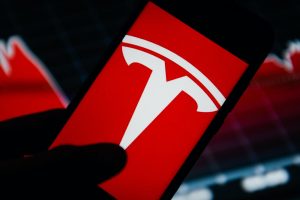- 🚗 Tesla owners are experiencing lengthy service waits, sometimes up to two months.
- 🔧 The service delay is partly due to insufficient Tesla Service Centers.
- 🏎️ Tesla previously attempted to improve service times with an “F1 Service Strategy.”
- 📉 Employee layoffs affecting Tesla’s service division contributed to extended wait times.
- 🏗️ Despite new Service Centers, the problem of long waits persists.
Tesla has long been a frontrunner in the electric vehicle market, promising sleek design, cutting-edge technology, and a sustainable future. However, these promises come with their unique set of challenges, notably in the realm of after-sales service. Many Tesla owners have recently voiced concerns about extended service wait times, a situation that brings to light several underlying issues within the company’s service infrastructure.
In this blog, we’ll delve into the reasons behind these prolonged wait times, Tesla’s efforts to tackle this growing concern, and the future implications for Tesla owners.
Understanding the Current Service Delays
Tesla owners are experiencing service wait times that can stretch up to two months. This delay is not just an inconvenience; for many, it poses a significant disruption to daily life, especially for those who rely on their vehicles for daily commutes or business purposes.
Key Reasons for the Delays
- Insufficient Service Centers:
- As Tesla’s popularity surged, the existing number of Service Centers struggled to cope with the growing demand. Despite the rollout of new centers, the pace has not kept up with the increase in Tesla’s customer base.
- Employee Layoffs:
- Earlier this year, Tesla made significant layoffs, affecting up to 20,000 employees. These cuts also targeted the service division, resulting in a reduced workforce and subsequently, longer wait times.
- Management Strategies:
- At one point, Tesla attempted to revamp its service model with an “F1 Service Strategy,” inspired by the quick, precision-driven pit stops in Formula 1 racing. Despite its innovative approach, this strategy did not translate into the expected improvements in service delivery.
Tesla’s Current and Future Solutions
In light of these challenges, how is Tesla addressing them? And what can current and potential Tesla owners expect in the near future?
1. Expansion of Service Centers
Tesla is actively working to expand and optimize its network of Service Centers to better match the growing demand. These expansions are crucial steps in alleviating the existing bottleneck. By investing in infrastructure, Tesla aims to reduce the wait times and provide timely service to its customers.
2. Technological Innovations
- Mobile Service Fleet: Tesla has been expanding its mobile service fleet, which allows technicians to perform certain repairs and maintenance tasks at the owner’s location. This not only decongests Service Centers but also adds convenience for owners.
- Service Automation and AI: The company is looking into leveraging AI to preemptively diagnose and address vehicle issues, reducing the need for in-center visits.
3. Customer Communication Enhancements
Tesla is also focusing on improving its communication with customers regarding wait times and service schedules. Transparent communication can help in managing expectations and reducing customer frustration.
Looking Ahead: The Implications for Tesla
For Tesla, addressing these service challenges is key to maintaining customer satisfaction and loyalty. The increased focus on service expansion and technological solutions is promising, but they must be implemented swiftly to keep up with the brand’s rapid growth.
For Tesla Owners
- It’s crucial to stay updated with service options, including checking for mobile service availability in your area.
- Engage with Tesla’s customer support to explore potential interim solutions for your service needs.
Tesla’s journey in resolving these service delays will serve as a critical learning curve, not just for itself but for the broader EV industry as it scales up to meet the demands of a growing consumer base.





